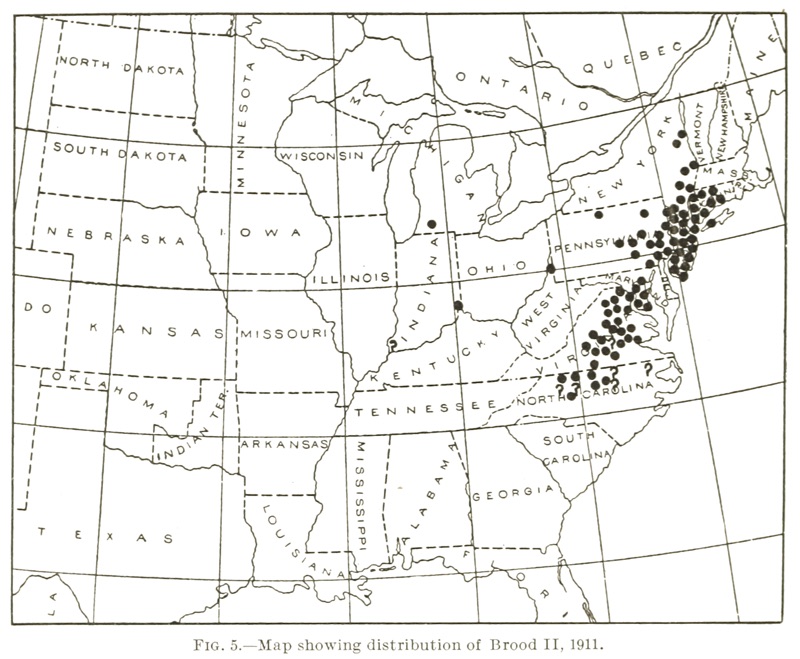Brood II will next emerge in 2030.
This page has not been updated since 2013.
Cicada Mania was started back in 1996, the last time Brood II emerged! The Spring of 2013 will be our first chance to see the children of the cicadas that emerged 17 years ago. Here is the basic information you need to know about the 2013 Brood II emergence.
Even though the emergence is 5 to 6 months away, it is never too early to begin planning… especially if you are a cicada maniac like me.
When will the Brood II cicadas emerge?
Brood II cicadas will emerge sometime in the Spring of 2013. They typically emerge once the soil 8 inches (20cm) below the surface gets to 64 degrees Fahrenheit (18º C). If we have a hot Spring, as we did in 2012, the cicadas could emerge in mid-to-late April. If we have a moderate Spring, the cicadas will wait until May.
Where will they emerge?
Brood II will emerge in parts of Connecticut, Maryland, North Carolina, New Jersey, New York, Pennsylvania, and Virginia.
- The map in this article is an old one from C.L. Marlatt’s 1898 bulletin “The Periodical Cicada. An Account of Cicada Septendecim, Its Natural Enemies and the Means of Preventing Its Injury, Together with a Summary of the Distribution of the Different Broods.” (Download it from this page).
- Cicadas @ UCONN (formerly Magicicada.org)’s Brood II page has an updated map, and Cicadas @ UCONN (formerly Magicicada.org) will have a live map of the Brood II emergence, which you can contribute to.
Magicicadas won’t emerge everywhere in the states mentioned above. They might not exist in your town or neighborhood (particularly if trees were removed from your neighborhood).
More information about where the cicadas will emerge.
What is a Magicicada cicada?
Magicicada is a genus of periodical cicadas known for emerging in massive numbers in 17 or 13 year cycles/periods. The cicadas emerging in 2013 have 17 year life-cycles. Magicicada are also organized into broods. There are 12 broods of 17 year cicadas, and the brood emerging in 2013 is Brood II (Brood Two).
There are 3 species of 17-year Magicicada: M. septendecim (aka “decims”), M. cassini, and M. septendecula. The adults of all three species have black bodies with orange markings, and almost all have red-orange eyes (some have white or multi-colored eyes.
Here is some video and audio of 17-year Magicicada. This will give you an idea of what to expect:
Cicada Mania, best of 2007, part 1 by Dan from Cicada Mania on Vimeo.
More information:
- Magicicada Frequently Asked Questions
- How to tell the difference between the 17 year species
- Cicadas and Prime Numbers
- Six Cicada Experiments
- Periodical Cicada Fun Facts
- Cicada Books are a nice souvenir of a cicada emergence.
- All Magicicada posts on this site
1907 Map Marlatt, C.L.. 1907. The periodical cicada. Washington, D.C. : U.S. Dept. of Agriculture, Bureau of Entomology.


